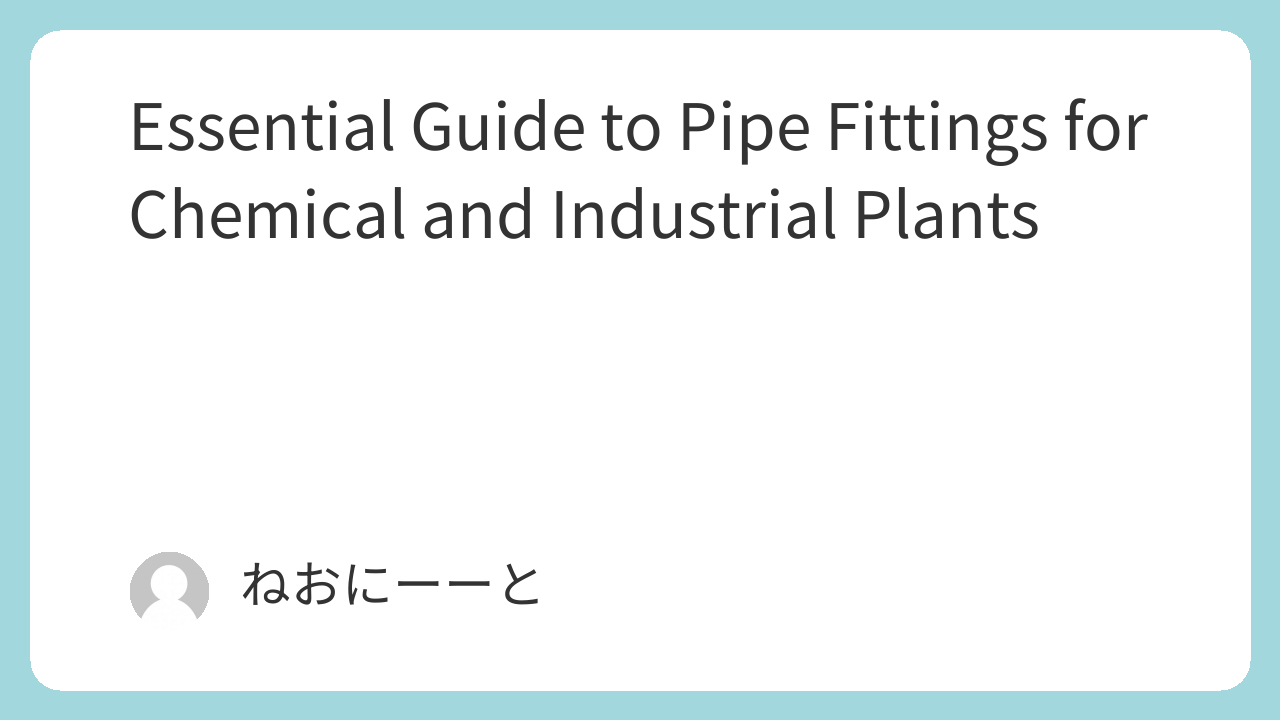In piping construction and plant design, selecting the right pipe fittings is a crucial step. Pipe fittings connect pipes, and their type significantly affects function and performance.
From elbows and tees to reducers, understanding each fitting’s role is essential for mechanical and piping engineers.
This article provides a detailed overview of common pipe fittings, their characteristics, and practical tips for selecting the right fitting for your system. Mastering these basics is key to flexible and efficient piping design.
Butt Weld Fittings
Fittings are used to adjust pipe diameter and direction. In chemical plants, welding is preferred over threaded connections due to leak risks.
- Socket weld fittings: used for high-pressure lines.
- Butt weld fittings: commonly used for low-pressure lines in batch chemical plants.
Elbows
Elbows (E or L) change pipe direction, similar to bending an arm.
90° Elbows
Most commonly used in batch chemical plants to optimize pipe layout. Using one 90° elbow instead of two 45° elbows reduces welding points and cost.
45° Elbows
Used in special cases:
- Avoid pipe interference in tight spaces
- Adjust for vacuum seals (e.g., atmospheric legs)
- Drop powders or slurry efficiently
Short vs Long Elbows
- Short elbows: tighter radius, prone to cracking, used when space is limited
- Long elbows: preferred for durability and smooth flow
Tees (T-Fittings)
Divide flow into two directions.
- Equal tees: commonly used in headers
- Reducing tees: adjust branch size; useful for future flexibility and cost reduction
Reducers
Used to change pipe diameter, often at equipment connections.
- Concentric reducers: align pipe centerlines
- Eccentric reducers: minimize liquid or gas accumulation, critical near pumps
Pump Piping Considerations
- Suction side: low-pressure, avoid cavitation, use eccentric reducers with flat top
- Discharge side: use eccentric reducers with flat bottom to prevent liquid pooling
- Include drain valves for maintenance
Cross Fittings
- Rarely used in welded steel due to high fabrication and leak risks
- Homemade crosses increase welding complexity
- Often a sign of a problematic piping design
Summary
Pipe fittings directly impact plant safety and efficiency. Selecting the right type based on function, environment, and system layout ensures long-term operational stability. Understanding the types and proper applications of fittings is essential for engineers involved in design, maintenance, and operations.

Comments